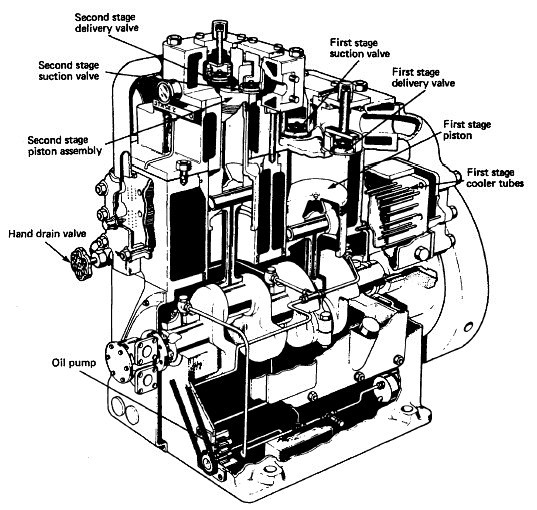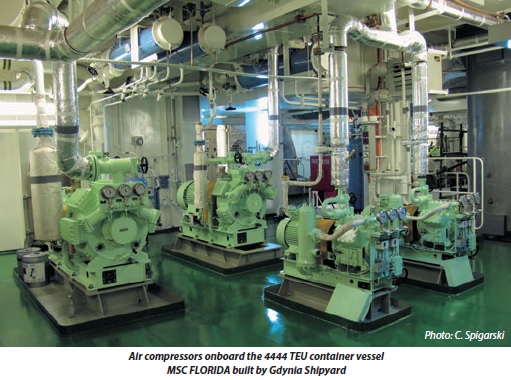
Air Compressor Arrangement & Distribution for Ships Machinery Spaces
Usually a two-stage, two-crank air compressor machine used aboard ship to supply
compressed air. The air is compressed in the first stage, cooled and compressed to higher
pressure in the next stage. Compressors must always be started at the unloaded condition
since otherwise pressures build up rapidly producing very high starting torques.
Compressed air has many uses on board ship, ranging from diesel engine starting to the cleaning of machinery during maintenance. The air pressures of 25 bar or more are usually provided in multi-stage machines. Here the air is compressed in the first stage, cooled and compressed to a higher pressure in the next stage, and so on. The two-stage crank machine is probably the most common.
Compressed air has many uses on board ship, ranging from diesel engine starting to the cleaning of machinery during maintenance. The air pressures of 25 bar or more are usually provided in multi-stage machines. Here the air is compressed in the first stage, cooled and compressed to a higher pressure in the next stage, and so on. The two-stage crank machine is probably the most common.




